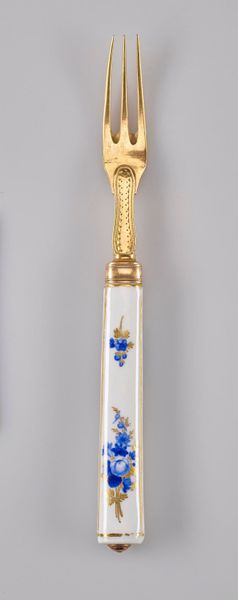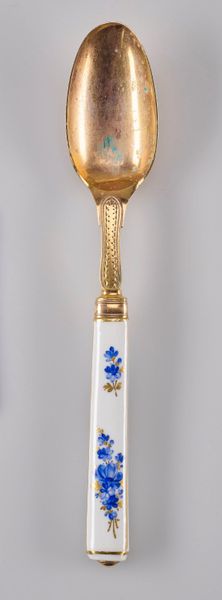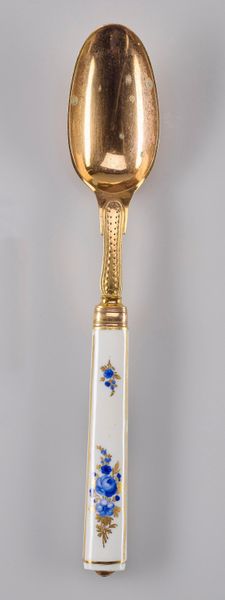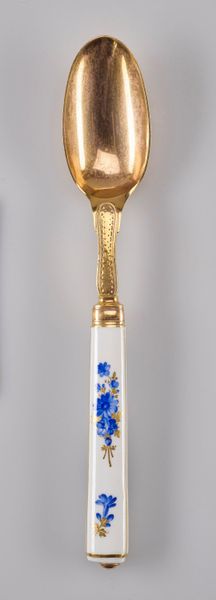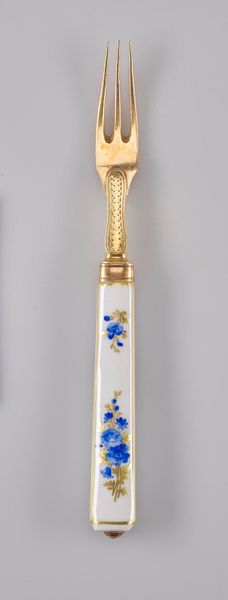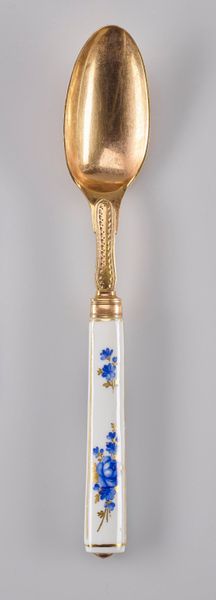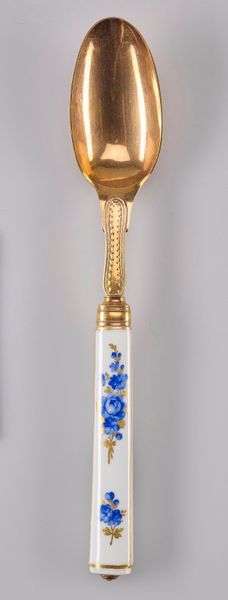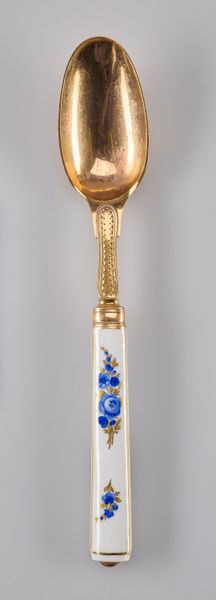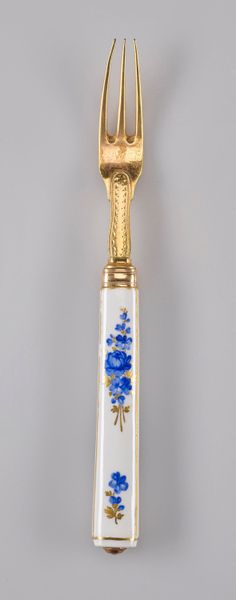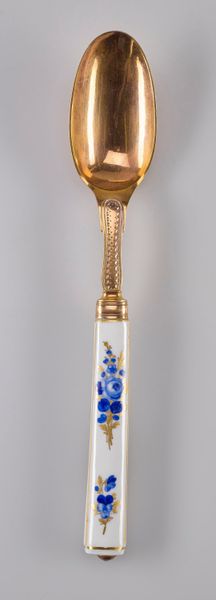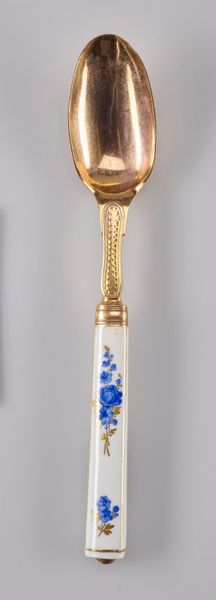
Copyright: Public Domain
Editor: Here we have "Fork," made around 1775 by the Meissen Porcelain Factory. It's porcelain and ceramic, and the delicate floral design along the handle really catches the eye. What strikes me is the contrast between the gold of the fork and the delicate blue flowers. How do you interpret this piece in terms of its historical context? Curator: This fork is far more than a simple eating utensil; it's a powerful statement of social hierarchy and cultural values of the late 18th century. Consider the Rococo style - the elaborate detail, the emphasis on ornamentation, and the porcelain material itself. All speak to the aristocracy's obsession with luxury and their distancing from the everyday lives of the masses. Editor: So, the beauty is also about exclusivity? Curator: Precisely. This isn't just decorative art, it’s a symbol of power and wealth. Eating with such a utensil signified not just refinement but access – access to resources, skilled artisans, and a lifestyle completely removed from the realities of the working class. Can we divorce the beautiful, artistic merit of the piece, from its social role? Editor: That's a good point. It does highlight the uncomfortable realities of wealth disparity. I hadn't considered the active role that this, seemingly passive, object might have played in reinforcing class structures. Curator: And further, consider the gendering of objects like these; porcelain, flowers…were these markers of elite femininity? Who was this really for, and what can we glean from that consideration? Editor: That is incredibly interesting! I will certainly be keeping this in mind in future observations.
Comments
minneapolisinstituteofart almost 2 years ago
⋮
Porcelain was still a luxury object in the 18th century, and these pieces of porcelain-handled flatware show the ostentatious, if impractical, use of the material (also seen on the handle of a small sword on view in Gallery 340). Like the cup and saucer shown here, they were meant to show the high development of porcelain as a German industry. Part of a dessert service for twelve, they were, according to the donor, given as a diplomatic gift from the Queen of Saxony to Prince Wladislav Lubienski of Poland. After the Second World War, as the formation of the U.S.S.R. was in progress, the owners transferred the service to American Ambassador Arthur Bliss Lane, whose widow gave the service, in its original leather traveling cases, to the MIA.
Join the conversation
Join millions of artists and users on Artera today and experience the ultimate creative platform.
